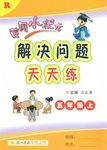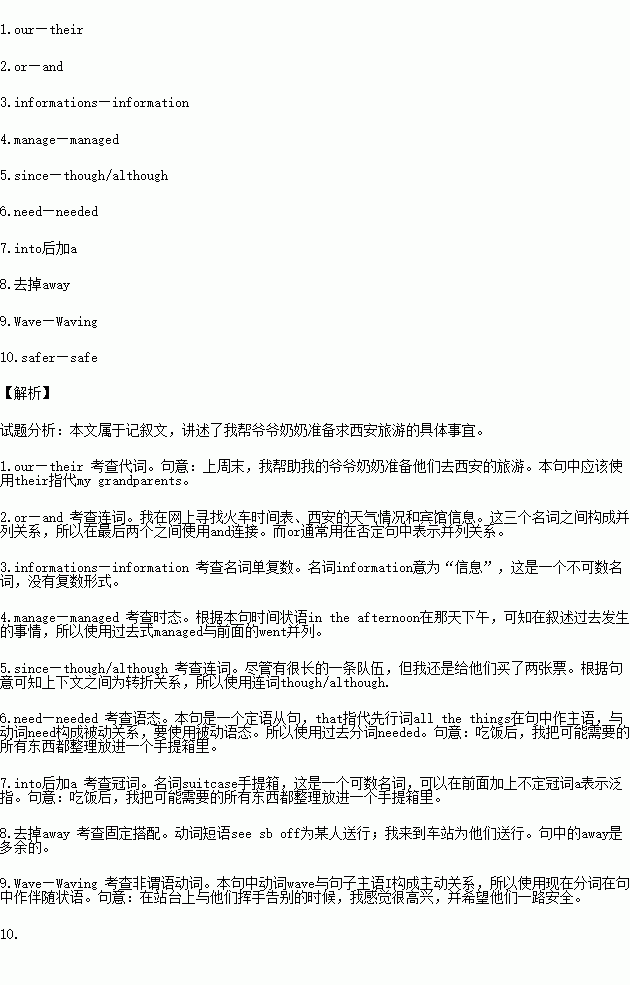Ő‚ńŅńŕ»›
∂ŐőńłńīŪ
ľŔ∂®”Ę”ÔŅő…ŌņŌ ¶“™«ůÕ¨◊ņ÷ģľšĹĽĽĽ–řłń◊ųőń£¨«Žń„–řłńń„Õ¨◊ņ–īĶń“‘Ō¬◊ųőń°£őń÷–Ļ≤”–10ī¶”Ô—‘īŪőů£¨√Ņĺš≤Ľ≥¨ĻżŃĹłŲīŪőů°£ īŪőůĹŲ…śľį“ĽłŲĶ•ī Ķń‘Ųľ”°Ę…ĺ≥żĽÚ–řłń°£ ‘Ųľ”£ļ ‘ŕ»Īī ī¶ľ”“ĽłŲ¬©◊÷∑ŻļŇ£®^£©£¨≤Ę‘ŕ∆šŌ¬√ś–ī≥Ųł√ľ”Ķńī °£ …ĺ≥ż£ļ į—∂ŗ”ŗĶńī ”√–ĪŌŖ£®\£©ĽģĶŰ°£
–řłń£ļ ‘ŕīŪĶńī Ō¬√śĽģ“ĽļŠŌŖ£¨≤Ę‘ŕł√ī Ō¬√ś–ī≥Ų–řłńļůĶńī °£ ◊Ę“‚£ļ 1. √Ņī¶īŪőůľį∆š–řłńĺýĹŲŌř“Ľī °£
2. ÷Ľ‘ –Ū–řłń10ī¶£¨∂ŗ’Ŗ£®ī”Ķŕ11ī¶∆ū£©≤Ľľ∆∑÷°£
Last weekend, I helped my grandparents prepare for our trip to Xi'an. On Saturday morning, together with them, I searched the Internet for the train schedule, the weather in Xi'an, or some hotel informations. In the afternoon, I went to the train station and manage to buy two tickets for them since there was a long queue. After dinner, I packed all the things that might be need into suitcase. And the next morning, I went to the station to see them away off. Wave goodbye to them on the platform, I felt very happy for them and wished them a safer journey.
 Ľ∆ł‘–°◊ī‘™Ĺ‚ĺŲő Ő‚ŐžŐžŃ∑ŌĶŃ–īūįł
Ľ∆ł‘–°◊ī‘™Ĺ‚ĺŲő Ő‚ŐžŐžŃ∑ŌĶŃ–īūįł »żĶ„“Ľ≤‚Ņžņ÷÷‹ľ∆ĽģŌĶŃ–īūįł
»żĶ„“Ľ≤‚Ņžņ÷÷‹ľ∆ĽģŌĶŃ–īūįł
